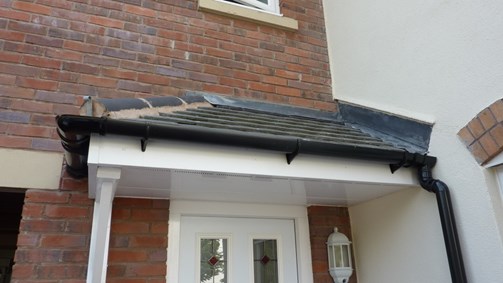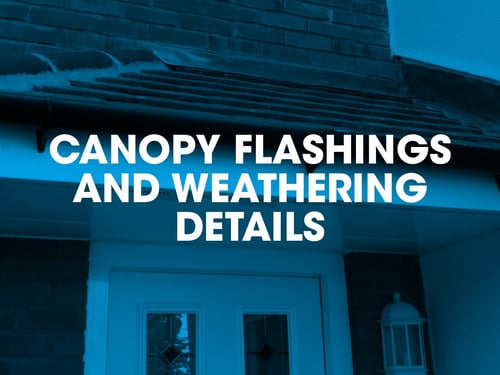Should flashings and cavity trays be provided to canopy roofs?
Section 6 - External walls and Section 11 - Roofs of the Technical Manual offers guidance on expected weathering details to roof abutments.
Site formed canopies
Where a site formed canopy is constructed to provide some level of weather protection above a non-enclosed external door, e.g. a front entrance door canopy:
A suitable lead or lead alternative flashing (third party accredited) is to be provided at the abutment of canopy roof and the external wall. This is to ensure that the construction materials are protected from moisture and avoid premature deterioration, due to wetting.
The flashing in this situation is not required to link to a cavity tray, however a cavity tray is still expected to be installed over the external door opening.

Prefabricated (GRP) canopies
Where a prefabricated (GRP) canopy is to be used above a non-enclosed external door, some manufacturers indicate that the canopy only needs to be sealed back to the external wall with silicone sealant, to reduce rainwater ingress getting behind the unit. However, the structural fixings that secure the canopy to the wall may be exposed and certain elements of the construction may be exposed against the wall face and vulnerable to moisture within the brickwork, stonework / recessed joints.
Unless the canopies have a third party product approval that indicates that only a silicone sealant is required, then for warranty purposes:
A lead or alternative lead type (third party accredited) cover flashing is required.
As with site formed canopies, the flashing is not required to link to a cavity tray, however a cavity tray is still expected over the external doorway.
Site formed and prefabricated canopies over habitable accommodation
Where either of the above is to be provided over habitable accommodation, e.g. a walk in bay construction or enclosed porches and conservatories:
A flashing is to be provided which must be linked to a cavity tray at all times in accordance with the Technical Manual.

